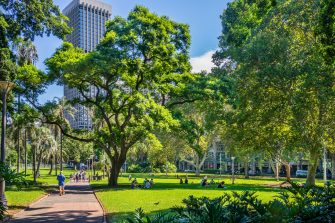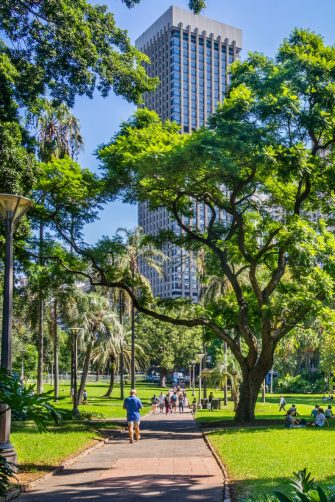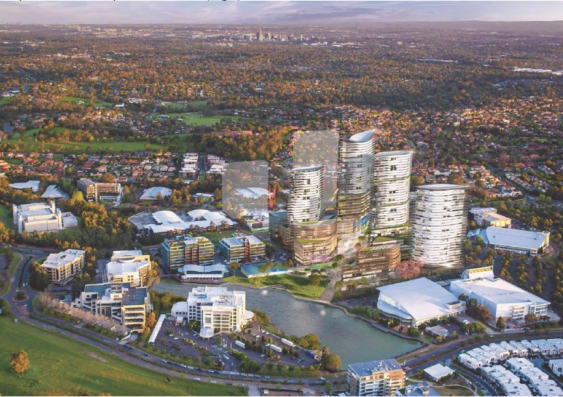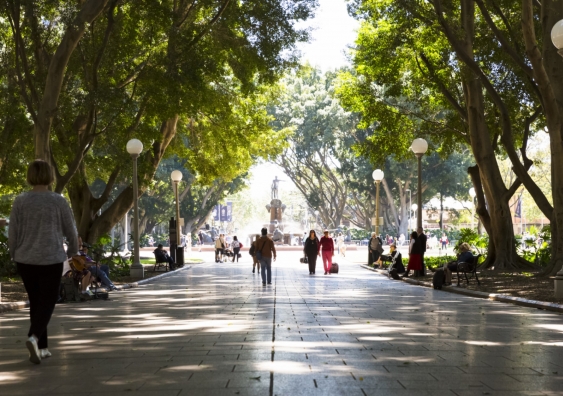A study comparing urban greenspaces with natural areas reveals they’re contributing a lot more to ecosystems than previously thought.
Could urban parks be offering as much to the health of our ecosystems as natural, pristine reserves do? This is a question a global team of ecologists tackled in a recent study, with the answer coming back – they were surprised to find – as yes.
In research published recently in the journal npj Urban Sustainability - Nature, researchers from UNSW Sydney and multiple institutions described how they compared 56 greenspaces from around the world with nearby natural environments. They were looking specifically at 23 different ‘services’ the soil and plants from each space offered the surrounding ecosystems such as water retention, carbon capture, nutrient recycling, and pathogen control.
Study lead author Dr David Eldridge from UNSW’s School of Biological, Earth & Environmental Science says beneath the manicured lawns, mulch and flowerbeds, parks are teaming with life in a very similar way to natural reserves.
“When we think of parks and ovals we generally think they’re reclaimed drainage areas, or they’re old rubbish dumps that have got some topsoil put on them,” he says.
“Often they are areas that aren’t much good for anything else, and we say 'Let’s turn them into a park', or an oval, or a golf course, or something like that. But in fact, when you look at the soils, you find that soils are in good condition. They’re pretty functionally similar, in most respects to natural systems.”
We should think of [greenspaces] as the lungs of the city.
In fact, of the 23 benefits to ecosystem compared, six of them were better in urban greenspaces. These were: available phosphorus, water holding capacity, water respiration, plant cover, arbuscular mycorrhizal fungi (that help plants capture nutrients) and arachnid diversity.
“It’s really great to see that greenspace soils were also respiring more,” Dr Eldridge says.
“Respiration is basically the production of CO2. And that means that there are more bugs in the soil that are respiring, they’re breathing, and that’s a measure of microbial activity that all life depends on.
“When you look at all of these measures of function that we normally think about in soil – how stable the soil is, how the water is regulated, water infiltration, nutrients, plant symbiosis, decomposition making nutrients available to plants – mostly, green spaces aren’t that different to natural systems.”
More than social well-being
Normally we think of green urban spaces as land belonging to the public that provides a vital connection with nature and contributes to our social well-being. But the most recent study shows that these spaces are giving us more benefits than we thought.
“Every time we put concrete over soil, or construct pathways through our parks and natural spaces, we’re making it more and more difficult for water to get into the soil. This gives us more runoff, often taking pollutants out to the sea,” Dr Eldridge says.
“But in fact, what these parks are doing is that they’re providing a place where we can get water into the soil where we can stop that water running off into the sea taking all the litter, plastic and crap with it. I think drainage and water management is an underestimated service that our parks are providing.”
Another benefit greenspaces offer are opportunities for people to come into contact with soil microbes.
“This exposure is really beneficial to human health by promoting effective immunoregulation and reducing allergies,” Dr Eldridge says.
Greenspaces will become more important as our climate gets drier and hotter, providing respite from the sun and a place to hang out. Urban greenspaces are critical for all of us, and should not be underestimated, he says.
“We should think of them as the lungs of the city.”







